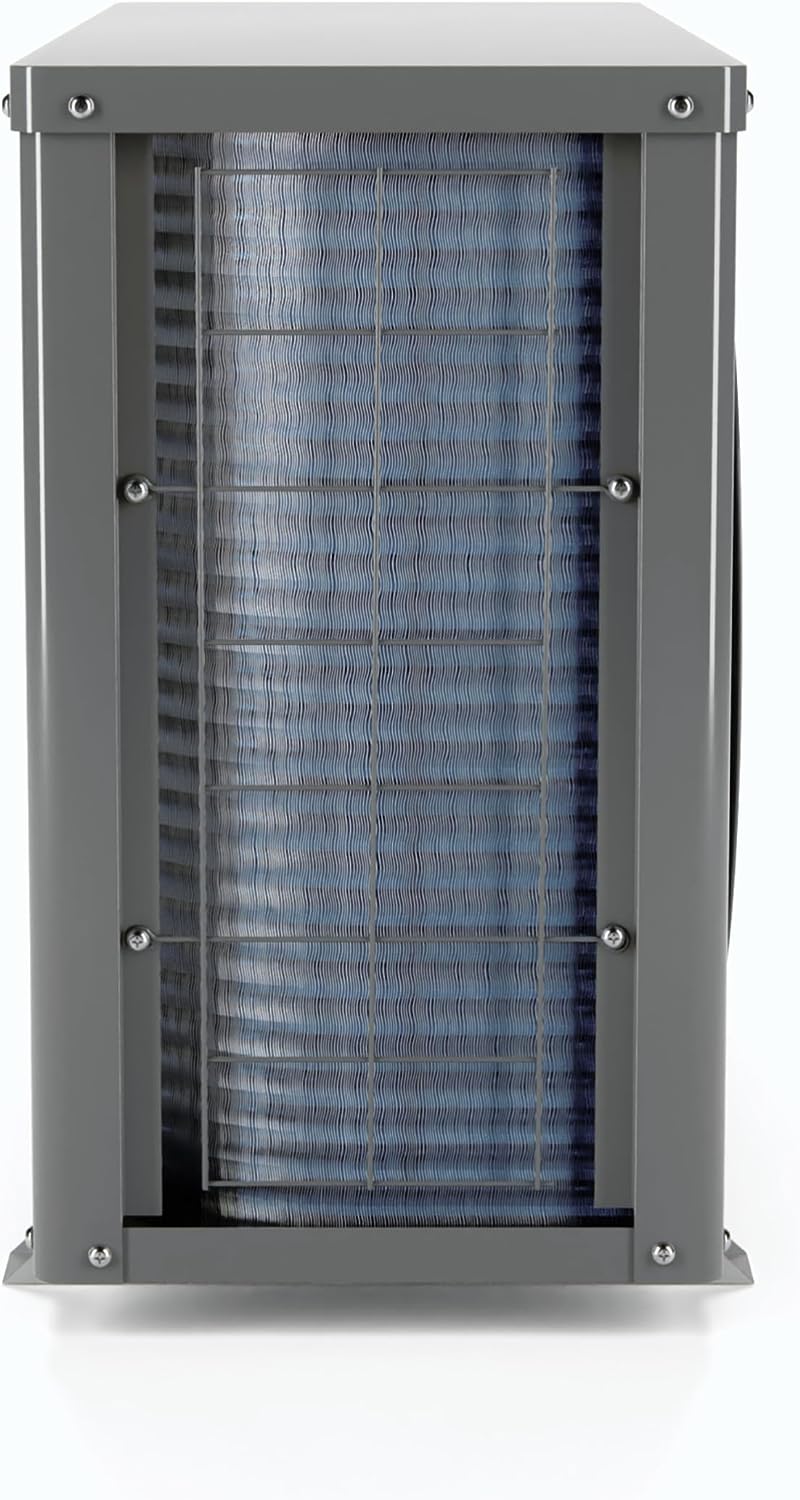Heating springs, like a warm embrace on a chilly day, offer a range of benefits and drawbacks.
With their efficient heat transfer and precise temperature control, they are versatile for various applications. They provide a cost-effective heating solution with quick response times. Moreover, their longevity and durability make them a reliable option.
However, they have limited compatibility with certain materials.
In this article, we will explore the pros and cons of heating springs, shedding light on their potential advantages and limitations.
Key Takeaways
- Heating springs offer efficient and precise temperature control, thanks to the design of the spring, heat distribution, and the use of temperature sensors and advanced control systems.
- They have a wide range of practical uses in various industries, including industrial processes, electronic devices, medical equipment, and automotive applications.
- Heating springs are cost-effective, providing energy savings, minimal maintenance, and longer lifespan compared to other heating systems. They also reduce greenhouse gas emissions and can potentially offer tax benefits.
- These springs are known for their longevity and durability, as they can withstand high temperatures, maintain structural integrity under extreme conditions, and offer consistent and reliable performance. However, compatibility considerations should be taken into account for safe and efficient operation in different applications.
Efficient Heat Transfer
Efficient heat transfer is crucial for optimizing the performance of heating springs. When heating springs are operating, they generate heat that needs to be transferred efficiently to the surrounding environment or the target object. This ensures that the spring can maintain its desired temperature and deliver optimal performance.
There are several factors that contribute to efficient heat transfer in heating springs. Firstly, the design of the spring plays a significant role. The shape and material of the spring can affect how heat is distributed and dissipated. Springs with a larger surface area or made from materials with high thermal conductivity are more effective in transferring heat.
Additionally, the presence of a heat transfer medium, such as a liquid or gas, can enhance the efficiency of heat transfer in heating springs. This medium facilitates the transfer of heat from the spring to the surrounding environment. Proper circulation and flow of the medium are essential to ensure maximum heat transfer.
Furthermore, maintaining good contact between the spring and the target object is crucial for efficient heat transfer. Any gaps or insulating layers can hinder the transfer of heat and decrease the overall effectiveness of the heating spring.
Precise Temperature Control
How can heating springs achieve precise temperature control?
Precise temperature control is essential in many applications, from industrial processes to household appliances. Heating springs have proven to be an effective method for achieving this level of control.
One way heating springs achieve precise temperature control is through their design. These springs are made from materials with high thermal conductivity, such as copper or aluminum. This allows for efficient heat transfer, ensuring that the desired temperature is reached quickly and accurately. Additionally, heating springs are designed with a high surface area to volume ratio, which enhances heat dissipation and helps maintain a stable temperature.
Another method used by heating springs to achieve precise temperature control is through the use of temperature sensors. These sensors are integrated into the springs and continuously monitor the temperature, providing feedback to the heating system. This feedback allows for real-time adjustments to be made, ensuring that the desired temperature is maintained within a narrow range.
Furthermore, heating springs can also incorporate advanced control systems. These systems can utilize algorithms and mathematical models to optimize temperature control. By analyzing data from the temperature sensors and making adjustments based on pre-defined parameters, heating springs can achieve highly accurate and precise temperature control.
Versatility for Various Applications
Heating springs offer wide-ranging practical uses and demonstrate their adaptability to different tasks. From industrial applications such as heating elements for machinery and equipment to residential uses like heating coils for appliances, heating springs can be found in various settings.
Their versatility allows them to be utilized in diverse fields, making them a valuable resource for a range of applications.
Wide-Ranging Practical Uses
The versatility of heating springs allows for their wide-ranging practical applications in various industries. Here are four key uses that highlight their adaptability:
- Thermal Management: Heating springs are commonly used in thermal management systems to regulate temperature and prevent overheating in electronic devices, such as laptops and smartphones. They provide efficient heat transfer and precise temperature control.
- Medical Equipment: Heating springs are utilized in medical equipment, such as patient warming systems and incubators, to maintain a stable and controlled environment. They ensure optimal conditions for patients and help in the healing process.
- Industrial Processes: Heating springs are essential in industrial processes that require controlled heating, such as plastic molding and food processing. They offer reliable and consistent heat distribution, enabling efficient production and high-quality output.
- Automotive Industry: Heating springs find applications in automotive systems, such as engine cooling and cabin heating. They contribute to engine efficiency and passenger comfort, ensuring a smooth and safe driving experience.
The wide range of practical uses of heating springs showcases their adaptability and importance in various industries.
Adaptability to Different Tasks
Heating springs demonstrate their adaptability and versatility for various applications by seamlessly transitioning from one task to another. These springs are designed to provide heat, making them ideal for a wide range of uses.
For instance, in heating systems, they can be used to regulate temperatures by expanding and contracting according to the desired settings. Additionally, heating springs can be utilized in household appliances such as ovens and toasters, where they help distribute heat evenly.
Their ability to adapt to different tasks also makes them suitable for industrial applications. They can be found in machinery and equipment that require temperature control, such as in the manufacturing of plastic products.
Cost-Effective Heating Solution
When it comes to cost-effective heating solutions, heating springs offer several advantages.
Firstly, they're an energy-saving option, allowing users to reduce their energy consumption and lower their utility bills.
Additionally, heating springs provide long-term cost benefits as they require minimal maintenance and have a longer lifespan compared to other heating systems.
Energy-Saving Heating Option
An energy-saving heating option, heating springs provide a cost-effective solution for keeping homes warm. These innovative systems utilize the natural heat stored in the ground to efficiently heat residential spaces.
Here are four reasons why heating springs are an excellent choice for homeowners:
- Reduced energy consumption: Heating springs require less energy to operate compared to traditional heating systems. By harnessing the earth's natural warmth, they can significantly lower energy bills.
- Environmentally friendly: Heating springs produce fewer greenhouse gas emissions, making them a greener alternative. This eco-friendly solution helps reduce the carbon footprint of households.
- Long-term cost savings: While the upfront installation cost of heating springs may be higher, their energy efficiency leads to long-term savings. Homeowners can enjoy reduced heating expenses for years to come.
- Increased home value: Installing an energy-saving heating system like heating springs can boost a property's value. Potential buyers appreciate the cost savings and environmental benefits associated with these systems.
Long-Term Cost Benefits
Utilizing the natural heat stored in the ground, heating springs offer a cost-effective and long-term solution for homeowners looking to reduce heating expenses. By harnessing the earth's energy, heating springs provide a sustainable and efficient heating system that can lead to significant cost savings over time. Here are some key cost benefits of heating springs:
| Cost Benefits | Explanation |
|---|---|
| Lower Energy Bills | Heating springs can significantly reduce energy consumption, resulting in lower monthly heating bills. |
| Minimal Maintenance | Unlike traditional heating systems, heating springs require minimal maintenance, leading to lower long-term costs. |
| Increased Efficiency | Heating springs have high efficiency ratings, ensuring that a large percentage of the energy used is converted into heat. |
| Long Lifespan | With proper maintenance, heating springs can last for decades, providing homeowners with a durable and cost-effective solution. |
| Potential Tax Benefits | Depending on the region, homeowners may be eligible for tax incentives or rebates for installing energy-efficient heating systems such as heating springs. |
Quick Heating and Response Time
One advantage of heating springs is their rapid heating and response time, allowing for quick and efficient temperature adjustments. This characteristic makes them an attractive option for various applications where instant heating is required. Here are four reasons why the quick heating and response time of heating springs can be beneficial:
- Time efficiency: Heating springs can reach the desired temperature quickly, reducing the time needed to heat up a space or an object. This is particularly advantageous in situations where time is of the essence, such as in industrial processes or emergency heating situations.
- Energy efficiency: The rapid response time of heating springs means that they require less energy to reach the desired temperature. This can result in cost savings and reduced energy consumption, making them an environmentally-friendly option.
- Precision control: Heating springs offer precise temperature control, allowing users to adjust the temperature quickly and accurately. This is especially beneficial in applications that require precise temperature regulation, such as scientific experiments or medical devices.
- Enhanced comfort: The quick heating and response time of heating springs ensure a more comfortable experience for users. Whether it's heating a room or a seat, these springs provide almost instant warmth, ensuring a cozy and inviting environment.
Longevity and Durability
The longevity and durability of heating springs make them a reliable choice for various applications. Heating springs are designed to withstand high temperatures and repetitive use, ensuring their longevity and durability over time. This makes them suitable for a wide range of industries and environments.
One of the key advantages of heating springs is their ability to maintain their structural integrity even under extreme conditions. Whether it's in a high-temperature industrial setting or a corrosive environment, these springs are built to last. Their robust construction and high-quality materials ensure that they can withstand the test of time.
Moreover, heating springs are designed to provide consistent and reliable performance over extended periods. They're engineered to withstand thermal expansion and contraction, ensuring that they can endure repeated heating and cooling cycles without compromising their functionality. This makes them ideal for applications where precision and reliability are crucial.
In addition, heating springs are known for their resistance to wear and tear. They're designed to resist deformation and maintain their shape, even after prolonged use. This not only extends the lifespan of the springs but also reduces the need for frequent replacements, resulting in cost savings for businesses.
Limited Compatibility With Certain Materials
Heating springs have a limited compatibility with certain materials due to their potential reactivity when exposed to specific substances. While heating springs are widely used in various industries for their ability to generate heat, they may not be suitable for all applications.
Here are some key points to consider regarding the limited compatibility of heating springs with certain materials:
- Corrosion: Heating springs can be prone to corrosion when exposed to corrosive materials such as acids or strong bases. This can lead to the degradation of the springs over time, affecting their performance and potentially causing safety hazards.
- Melting point: Different materials have different melting points. Heating springs may not be compatible with materials that have a significantly lower melting point than the spring itself. Excessive heat can cause deformation or even melting of the spring, rendering it ineffective or causing damage to the surrounding components.
- Chemical reactions: Some materials may undergo chemical reactions when exposed to high temperatures. These reactions can result in the formation of toxic gases or other harmful byproducts. It's important to ensure that the materials used in conjunction with heating springs are stable and don't pose a risk of chemical reactions.
- Electrical conductivity: Heating springs rely on electrical conductivity to generate heat. Therefore, they may not be compatible with materials that have poor electrical conductivity. This can limit the range of materials that can be effectively heated using springs.
Considering the limited compatibility of heating springs with certain materials is crucial in order to ensure safe and efficient operation in various applications.
Frequently Asked Questions
Can Heating Springs Be Used in Outdoor Applications?
Heating springs can be used in outdoor applications. They provide warmth and can be used in various outdoor heating systems. However, there are considerations such as weather resistance and durability that need to be taken into account.
Are Heating Springs Suitable for Heating Liquids?
Heating springs can be suitable for heating liquids. They provide a reliable and efficient way to transfer heat, allowing liquids to be heated quickly and evenly. However, there may be limitations depending on the specific application.
How Does the Cost of Heating Springs Compare to Other Heating Solutions?
When comparing the cost of heating springs to other heating solutions, it is important to consider factors such as initial investment, maintenance costs, and energy consumption.
Can Heating Springs Be Used in High-Temperature Environments?
Heating springs can be used in high-temperature environments. They are designed to withstand extreme heat and maintain their functionality. However, there may be some limitations and considerations to take into account.
Are Heating Springs Safe to Use in Residential or Commercial Settings?
Heating springs can be safely used in residential and commercial settings. They provide reliable and efficient heating, ensuring comfort and convenience. However, proper installation and maintenance are essential to prevent any potential hazards.






